| |
|
EAS Systems : We are proud to introduce ourselves as one of the renowned suppliers and traders of a wide range of EAS Systems. These systems are skillfully designed and developed by experienced manufacturers of the industry. Demands of these devices are increasing day by day owing to its precise designs and robustness. Further, these are acclaimed for their rough and tough usage and accurate dimension. These are available at budget friendly rates. Electronic Article Surveillance (EAS) is a technological method for preventing shoplifting in retail stores, libraries, and other businesses where merchandise is on display. Sensor Tags or Sensor Labels are fixed to merchandise and are removed or deactivated by personnel when the merchandise is properly bought or checked out. At building exits, detection systems are installed that will sound an alarm or alert the staff when an active tag or label that has not been removed or deactivated passes through the exit. Apparel retailers were the first to begin using EAS products to protect their merchandise in the mid 1970′s. Apparel was the first type of merchandise to be tagged, because the hard plastic security tags were introduced well before the adhesive paper security labels. In addition, Loss Prevention executives wanted more visible and substantial looking tags on the merchandise to deter shoplifting as much as possible.were the pioneers of EAS technology back then.
It usually involves three components:
-
Electronic Antenna
- Deactivator or Detacher
- Electronic Tag
There are several major types of electronic article surveillance systems :
- Magnetic or magneto-harmonic
- Acousto-magnetic or magnetostrictive
- Radio Frequency
1. AM technology :Acousto-magnetic antennas are ideal for clothing retailers, department stores, as well as outlets selling cosmetics, hardware and electric goods. Jammer detection is integrated. No other technology covers such great distances. A wide selection of attractive and modern AM antennas. Jammer detection is integrated. No other technology covers such great distances. A wide selection of attractive and modern AM antennas.
These tags are similar to magnetic tags in that they are made of two strips, a strip of magnetostrictive.
Magnetostriction is a property of ferromagnetic materials that causes them to change their shape when subjected to a magnetic field. The effect was first identified in 1842 by James Joule when observing a sample of nickel called ferromagnetic.
Ferromagnetism is the basic mechanism by which certain materials form permanent magnets and/or exhibit strong interactions with magnets; it is responsible for most phenomena of magnetism encountered in everyday life called amorphous metal.
An amorphous metal is a metallic material with a disordered atomic-scale structure. In contrast to most metals, which are crystalline and therefore have a highly ordered arrangement of atoms, amorphous alloys are non-crystalline and a strip of a magnetically semi-hard metallic strip, which is used as a biasing magnet (to increase signal strength) and to allow deactivation. These strips are not bound together but free to oscillate mechanically .
Amorphous metals are used in such systems due to their good magnetoelastic coupling, which implies that they can efficiently convert magnetic energy to mechanical vibrations.
The detectors for such tags emit periodic tonal bursts at about 58 kHz, the same as the resonance.
In physics, resonance is the tendency of a system to oscillate at larger amplitude at some frequencies than at others. These are known as the system's resonant frequencies . At these frequencies, even small periodic driving forces can produce large amplitude vibrations, because the system frequency of the amorphous strips. This causes the strip to vibrate longitudinally by magnetostriction, and will continue to oscillate after the burst is over. The vibration causes a change in magnetization in the amorphous strip, which induces an AC voltage in the receiver antenna. If this signal meets the required parameters (correct frequency, repetition etc.) the alarm is activated.
When the semi-hard magnet is magnetized, the tag is activated. The magnetized strip makes the amorphous strip respond much more strongly to the detectors, because the DC magnetic field given off by the strip offsets the magnetic anisotropy.
Magnetic anisotropy is the direction dependence of a material's magnetic properties. A magnetically isotropic material has no preferential direction for its magnetic moment in zero field, while a magnetically anisotropic material will align its moment to an easy axis.-Sources of magnetic within the amorphous metal. The tag can also be deactivated by demagnetizing the strip, making the response small enough to that it will not be detected by the detectors.
These tags are thicker than magnetic tags and are thus seldom used for books. However they are relatively inexpensive and have better detection rates (fewer false positives and false negatives) than magnetic tags.
|
|
| |
|
2. EM technology : Electromagnetic antennas are ideal for libraries, pharmacies and cosmetic stores 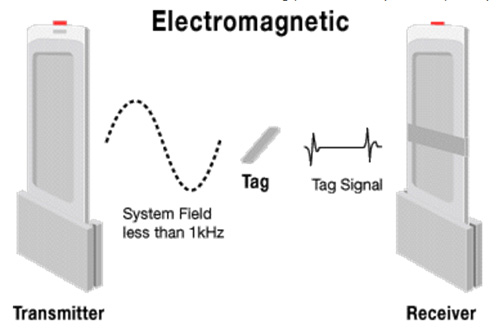
as well as supermarkets, hardware stores and electrical goods stores.
The tags for these systems are made of a strip of amorphous metal.
An amorphous metal is a metallic material with a disordered atomic-scale structure. In contrast to most metals, which are crystalline and therefore have a highly ordered arrangement of atoms, amorphous alloys are non-crystalline (metglas) which has a very low magnetic saturation value. Except for permanent tags, this strip is also lined with a strip of ferromagnetic.
Ferromagnetism is the basic mechanism by which certain materials form permanent magnets and/or exhibit strong interactions with magnets; it is responsible for most phenomena of magnetism encountered in everyday life.
Detection of the tag is achieved with a transmitter and receiver.
The transmitter and receiver work together to sense harmonics and sum or difference signals generated by the non-linear magnetic response of the material under a mixture of low-frequency (in the 10 Hz to 1000 Hz range) magnetic fields.
When the ferromagnetic material is magnetized, it biases the amorphous metal strip into saturation, where it no longer produces harmonics. Deactivation of these tags is therefore done with magnetization. Activation requires demagnetization. Due to the system being able to deactivate and re-activate this type of system is extremely suitable for libraries.
Due to the convenient dimensions of the tags, and their very low cost, this system is popular in libraries. |
|
| |
|
3. Radio-frequency systems : Antennas have been used for many years to combat shoplifting.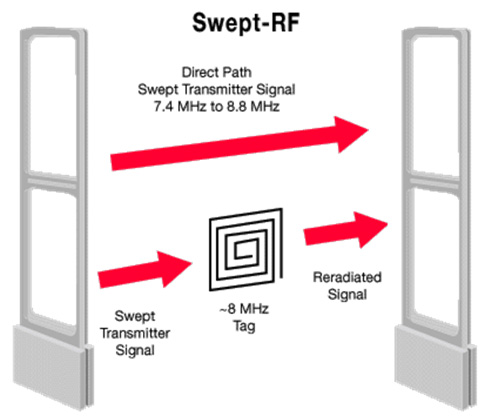
A perfect solution for clothing retailers, department stores and supermarkets. Antennas with people counting function are available. The selection of attractively designed RF antennas is very wide.
Gunnebo Gateway offers both swept and pulsed antennas.These tags are essentially an LC tank circuit.
An LC circuit is a resonant circuit or tuned circuit that consists of an inductor, represented by the letter L, and a capacitor, represented by the letter C that has a resonance
In physics, resonance is the tendency of a system to oscillate at larger amplitude at some frequencies than at others. These are known as the system's resonant frequencies . At these frequencies, even small periodic driving forces can produce large amplitude vibrations, because the system peak anywhere from 1.75 MHz to 9.5 MHz. The most popular frequency is 8.2 MHz. Sensing is achieved by sweeping around the resonant frequency and detecting the dip. Deactivation for 8.2 MHz label tags is achieved by detuning the circuit by partially destroying the capacitor.
A capacitor or condenser is a passive electronic component consisting of a pair of conductors separated by a dielectric. When a voltage potential difference exists between the conductors, an electric field is present in the dielectric. This field stores energy and produces a mechanical force. This is done by submitting the tag to a strong electromagnetic.
Electromagnetism is the physics of the electromagnetic field, a field that exerts a force on particles with the property of electric charge and is reciprocally affected by the presence and motion of such particles field at the resonant frequency which will induce voltages exceeding the capacitor's breakdown voltage.
The breakdown voltage of an Insulator is the minimum voltage that causes a portion of an insulator to become electrically conductive.The breakdown voltage of a diode is the minimum reverse voltage to make the diode conduct in reverse which is artificially reduced by puncturing the tags.
|
|
| COMPONENTS : |
|
1. EAS Antenna : An antenna is installed at the store entrance 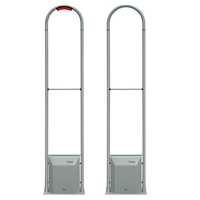 and contains a Radio Frequency electronic circuit board system that detects any electronic security tags or soft labels that pass by the antenna. When a tagged item passes by the antenna an alarm sounds warning you that a tagged merchandise item is leaving the store without being deactivated or removed at your checkout counter. and contains a Radio Frequency electronic circuit board system that detects any electronic security tags or soft labels that pass by the antenna. When a tagged item passes by the antenna an alarm sounds warning you that a tagged merchandise item is leaving the store without being deactivated or removed at your checkout counter.
| Specification : |
Main Technical Parameter
Center Scanning Frequency: 8.2MHz ± 0.05MHz
Sweeping bandwidth: 7.7~8.7MHz
Detecting Range : 140~220cm (related with label size)
Alarm volume:
High/Medium/Low 3 options
Dimensions: 1570x450x70mm
Input Voltage:24VDC
Frame Material: Aluminium
Application: High-grade garment store, Main entrance of supermarket, shopping plaza
Features
Ant shoplifting function, decrease goods loss
AGC Automatic Gain control function
Three kinds of alarm estimation way, compatible with different elecmagnetic enviroment
Sound and light alarm indication way
Four kinds of optional modulation frequency, avoid interference with other same equipment |
|
|
| |
|
2. Soft Rf Labels : Our soft RF labels are easy 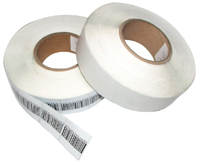 to apply, either in-store or at source, easy to detect when passed between RF EAS antennas, and can be easily deactivated with Checkpoint’s top of the line deactivation solutions when a customer makes a purchase. The labels are best used for protecting smaller products such as: to apply, either in-store or at source, easy to detect when passed between RF EAS antennas, and can be easily deactivated with Checkpoint’s top of the line deactivation solutions when a customer makes a purchase. The labels are best used for protecting smaller products such as:
Cosmetics
Fragrances
Jewelry
Apparel
Electronics
Over-the-counter drugs
|
|
| |
|
3. EAS RF Hard Tags : Our hard tags are built for 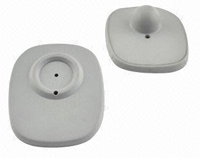 performance, toughness and ease of use. Built of sturdy plastic housings and time-tested locking mechanisms, they attach easily and, using PBS's reliable detachers are removed quickly at the point-of-sale. Hard tags are offered in a variety of styles and attachments. performance, toughness and ease of use. Built of sturdy plastic housings and time-tested locking mechanisms, they attach easily and, using PBS's reliable detachers are removed quickly at the point-of-sale. Hard tags are offered in a variety of styles and attachments.
|
|
| |
|
4. EAS Round Tags : X-50 Round hard tag with  cap fitted steel pin-Cream, detachable (with detacher), re-usable & durable. cap fitted steel pin-Cream, detachable (with detacher), re-usable & durable.
|
|
| |
|
5. Pencil Security tags : Pencil Security tags are the smallest and lightest EAS tags available. They have a very high pick rate and are extremely difficult to defeat. These tags work well on delicate/fine fabrics, shoes, lingerie, sporting goods and undergarments. smallest and lightest EAS tags available. They have a very high pick rate and are extremely difficult to defeat. These tags work well on delicate/fine fabrics, shoes, lingerie, sporting goods and undergarments.
|
|
| |
|
6. Jewellery Tags : EAS labels hidden in the body of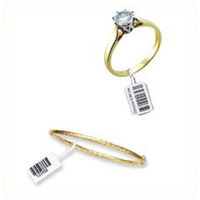 each tag provide cost-effective protection for all types of jewelry. Each tag includes either a multi-color label or raised imprint for brand identification. Several tagging styles available to ensure proper fit to your product. Custom shapes and configurations are available to fit your needs. Tags are touch or proximity deactived during checkout. each tag provide cost-effective protection for all types of jewelry. Each tag includes either a multi-color label or raised imprint for brand identification. Several tagging styles available to ensure proper fit to your product. Custom shapes and configurations are available to fit your needs. Tags are touch or proximity deactived during checkout.
|
|
| |
|
7. Optical Tags : Reusable and durable, the tag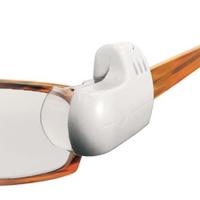 features a protective cushion that securely holds and protects eyewear. features a protective cushion that securely holds and protects eyewear.
|
|
| |
|
8. EAS Labels : Low-price EAS labels are available 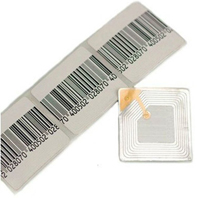 in a wide range of standard and custom styles and are available in sheets and rolls to accommodate retailers with source-tagging and other in-store product protection requirements. VAR (Value Added Reseller) solutions offer the perfect complement for a variety of retail applications from food to specialty designer tags for soft goods protection. in a wide range of standard and custom styles and are available in sheets and rolls to accommodate retailers with source-tagging and other in-store product protection requirements. VAR (Value Added Reseller) solutions offer the perfect complement for a variety of retail applications from food to specialty designer tags for soft goods protection.
|
|
| |
|
9. EAS Deactivator : Wax Ribbons are for printing onto paper 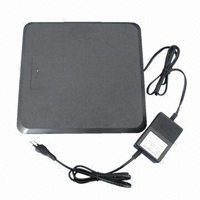 An antenna is installed at the store entrance and contains a Radio Frequency electronic circuit board system that detects any electronic security tags or soft labels that pass by the antenna. When a tagged item passes by the antenna an alarm sounds warning you that a tagged merchandise item is leaving the store without being deactivated or removed at your checkout counter. An antenna is installed at the store entrance and contains a Radio Frequency electronic circuit board system that detects any electronic security tags or soft labels that pass by the antenna. When a tagged item passes by the antenna an alarm sounds warning you that a tagged merchandise item is leaving the store without being deactivated or removed at your checkout counter.
|
|
| |
|
10. EAS Detacher : Designed for use with reusable 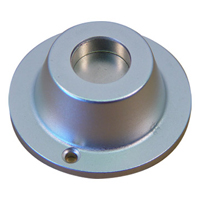 tags, Our detachers provide easy, reliable operation at point of sale. Hard tag detachers have no moving parts, so they can't wear out. Some are specially engineered with strong magnets to eliminate the threat of black market detachers. tags, Our detachers provide easy, reliable operation at point of sale. Hard tag detachers have no moving parts, so they can't wear out. Some are specially engineered with strong magnets to eliminate the threat of black market detachers.
|
|
| |
|
11. Label Deactivator : A wide selection of formats 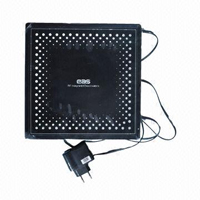 are available, including our innovative portable devices, tabletop units, flush mount and other varieties for reliable deactivation of tagged merchandise which offer flexibility for use in various through-put environments. are available, including our innovative portable devices, tabletop units, flush mount and other varieties for reliable deactivation of tagged merchandise which offer flexibility for use in various through-put environments.
|
|
| |
|
|
|
